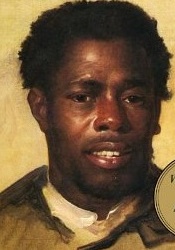Here are four histories of free Blacks in Virginia highlighting self reliant communities in a slave society. Of course, Virginia’s free African Americans have a history dating from 1619 with their importation as “servants” with subsequent freedom and voting rights in the 1600s. But these focus on the era of their substantial expansion and integration into the state’s economic life within Virginia’s slave society from the Revolution through the Civil War.
Slaves without Masters distinguishes between this distinct social caste in the Upper South and the Lower South. Israel on the Appomattox explores the Prince Edward County community of Israel Hill with its tobacco smallholders, artisans and boatmen. Free Blacks in Norfolk looks at life in a commercial port city with competition from white immigrants, and Artisan Workers in the Upper South: Petersburg studies free black artisans alongside slave artisans for hire, white wage earners and slave holding artisans in Virginia’s commercial center with the largest proportion of free blacks.
See more reviews of the best in Virginia History at the Book Club for your bookshelf.
Slaves without Masters

Slaves without Masters: The Free Negro in the Antebellum South (1976, 1992) by Ira Berlin describes a distinct social “caste” that was neither slave nor free. Berlin chooses the period in the southern United States history from the Revolution to the end of the Civil War. He distinguishes between their larger numbers of the Upper South and the smaller in the Lower South. Much of his scholarship on Virginia relies on Dr. Luther Porter Jackson of Virginia State University.
Especially in the Upper South, Americans freed thousands of slaves motivated by egalitarian ideals of the Revolution and evangelical Christianity. Their number grew to over a hundred thousand by 1810. The free blacks in turn created their own self-reliant communities of churches and schools, fraternal and benevolent societies. There they found an independence and dignity unavailable in the larger Southern society.
While those living in the Lower South encountered relatively less oppression due to kinship ties with whites, in the Upper South, free blacks were subject to tightened manumission law limiting the process of freeing enslaved relatives and increasingly circumscribed economic and social freedoms. They were seen as economic competitors to whites and a potential cause of slave unrest.
Nevertheless in the Confederate slave republic described at the conclusion, the free black in the South was neither enslaved nor expelled due to their essential economic contributions. Learn more about “Slaves without Masters” for your bookshelf at Amazon.com.
Israel on the Appomattox

Israel on the Appomattox: A Southern Experiment in Black Freedom from the 1790s Through the Civil War (2005) by Melvin Patrick looks at the free black community of Israel Hill in Southside’s tobacco growing Prince Edward County. In doing so he also makes connections to broader regional and national narratives, marking its anomalous existence of relative racial harmony in day-to-day life amidst Richmond’s growing legislative antagonism to free blacks generally.
While set in a county where two-thirds of the whites owned slaves, and the free blacks were outnumbered twelve to one by slaves, this book advances the story of black accomplishment. In this case, Israel Hill’s economic contribution to the county’s prosperity was effected by rural smallholders, artisans and the boatmen who plied the hundred miles along the Appomattox River to Petersburg. Learn more about “Israel on the Appomattox” for your bookshelf at Amazon.com.
Free Blacks in Norfolk

Free Blacks in Norfolk, Virginia, 1790-1860: The Darker Side of Freedom (1997) by Tommy L. Bogger studies the free blacks of Norfolk from 1790 to 1860. In 1782 the General Assembly made private manumissions easier, but the slave rebellions in Haiti and Virginia led to restrictions on the personal liberty and economic opportunity of free blacks in Virginia.
In Norfolk, over half of the manumissions came from the self-purchase of artisan men and their families. A mutually supportive free black community developed in the city, though under constant fear of being kidnapped and sold into the Lower South.
Amidst economic decline in the port city, an influx of European immigrants led to sterner economic competition and a more precarious existence. Unlike the more tolerant conditions in Northern cities such as Philadelphia, the conditions in Norfolk led some numbers to join the colonization movement in Liberia, seeking the chance to escape persecution and better their economic condition. Learn more about “Free Blacks in Norfolk” for your bookshelf at Amazon.com.
Artisan Workers, Petersburg

Artisan Workers in the Upper South: Petersburg, Virginia, 1820-1865 (2008) by Diane Barnes looks at four classes of artisans in Antebellum Petersburg, including the largest free black community as a percentage of its population in Virginia, which in turn had the largest free black population in the South. Other artisan classes were skilled slaves for hire, white wage earners, and master mechanics who were both slave holding and hirers of white and black free labor. Each class has their own dedicated chapter.
In Petersburg, a center of industry and transportation second only to Richmond, there was railroad and construction work along with employment in tobacco, iron, cotton and milling manufacturing. The whites living in a slave society were not as concerned with exploitation by bosses as were their Northern counterparts; they were more persistently antagonistic towards black labor competition, both slave and free. Learn more about “Artisan Workers in the Upper South” for your bookshelf at Amazon.com.
Visit The Virginia Historian’s 12 Steps to your personal Virginia History library, and then explore the Virginia History surveys spanning its 400 years from different perspectives.

